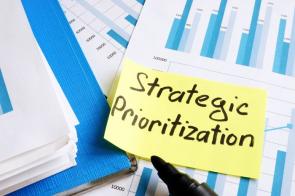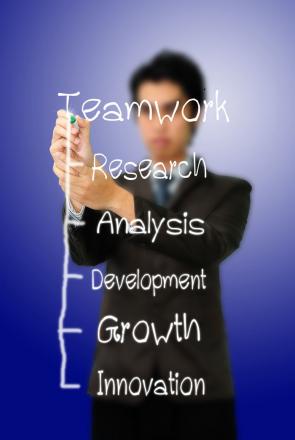Biglaw Appreciation for the Accountants
Accountants are the behind-the-scenes heroes for law firms, yet they receive little credit for the crucial work that they do. The accounting department in a firm is rarely seen or heard from, yet without them, the entire framework of a firm would be in imminent danger.
How Will Trump’s Immigration Reform Impact Businesses?
Summary: Is Trump’s immigration reform helping or threatening business in the United States? How are businesses adjusting?
7 Steps to Take When You’re Smarter Than Your Boss
Summary: Are you smarter than your boss? If so, what can you do about it?
The Basics of a 401(k) Plan and the Different Types of Plans
Summary: A 401(k) is a plan that lets employees invest a percentage of their income into a retirement savings plan.
The Changing World of HR
Summary: The workforce is constantly changing due to technology, diversity, and other factors, and HR must change with it. Learn more about how HR is changing in these articles.
Leaner Budgets Mean Tougher Decisions
Summary: Find out to prepare your company’s budget and still make employees feel valued in a leaner economy.
Economy Looks Good, Job Market Great
Summary: The economy is looking great this October, and over all this year, with the job market back to where it belongs and growing.
Balancing Competitive Executive Reward
Creating and balancing competitive executive reward is one of the trickiest feats. You can't do without it, and you find it difficult to justify - in fact it can affect your business capacity to recruit and retain, if you make even simple mistakes. This article takes a look at why, during designing executive compensation and reward, businesses need to look at competitors, and where they are handicapped by competitive compensation.
The Risks of Business Growth without Adequate Control
It is common to find people in business circles who believe all business growth is good and that businesses either grow or die. However, nothing can be further from the truth.
Points of Pain in Entrepreneurial Process Implementation
In his book The E-Myth Revisited (New York: HarperCollins, 1995), Michael Gerber made a succinct observation on the roles of different stakeholders in an entrepreneurial business process. According to Gerber, “the entrepreneur’s job is to create the process, management’s job is to make sure the process is followed, and the technician’s job is to use the process.”
How Businesses Block Business Growth and Why They Do It
While trying to understand the phenomenon of business growth and how it could be replicated across different business contexts, I came across a book by Edward D. Hess and Jeanne Liedtka titled The Physics of Business Growth: Mindsets, System, and Processes (Stanford, CA: Stanford Briefs, 2012). In the book the authors distilled the results of their more than 15 years of research in studying business growth, and the first chapter of their book describes how businesses themselves are engaged in Fighting the Physics of Business Growth.
The Six Types of Collaboration Scenarios
A great deal of organization work, like teamwork, is driven by needs that require us to collaborate. Specific business objectives and targets become easier to achieve when there is good collaboration (not collusion or competition) existing between key players in an organization. However, success in collaboration is defined by company culture, perception of the crisis, understanding of collaboration, and traits of collaborating individuals.
Major Training Requirements in Business Organizations
Training is vital in business organizations, and the role of training is to help new recruits and existent staff to acquire the skills and knowledge required in the workplace, and to perform their job functions.
Does the Affordable Care Act Make Businesses Less Likely to Hire?
The majority of accounting professionals surveyed (66%) feel that their business clients will hire less under ObamaCare, where only 2% feel that the Affordable Health Care Act will catalyze bringing on new hires - On a separate note, survey respondents also feel that business owners are less optimistic about hiring now than they were approximately 4 months ago in March of this year.
Retaining the Best Talent for Your Organization
Top talent is difficult to find and extremely expensive for an organization to replace. Human resources departments are often engaged in generalized activities targeted to address overall employee turnover. In fact the subject of overall employee turnover is brought up frequently at decision tables by the HR because it has been extensively studied, and there are known tools and solutions that can be implemented. This gives the HR department some space to work within known parameters and to work with known tools.
Getting a Grip on Employer Branding
Employer branding is a term that is being increasingly used today and is considered crucial to the survival of businesses. However, a number of businesses continue to suffer because executives or management confused about employer branding, try to pass it off as unnecessary. In most cases this is because they themselves are unclear about the implications of employer branding. To many such people, employer branding is nothing more than an extension of normal company branding developed for jobseekers. However, for the more enlightened others, employer branding supplements the product or service brand focus of a company and is a distinct phenomenon. Here we discuss common misconceptions as well as correct perspectives about employer branding as a separate process distinct from other branding elements of an organization.
How the U.S. Skills and Vacancies Gap Is Affecting the Job Market
Any perceived gap between skills and vacancies can turn the job market topsy-turvy indeed. This is the situation that most economists and employers around the world dread. To put it straight, the U.S. is facing a mismatch of major proportions in the employment scenario currently. According to recent reports, more than 1.35 million people in the country are unemployed, but statistics point out that more than 2.5 million jobs are going unfilled on a monthly basis. This is commonly known as the U.S. skills gap.
Market Failures And Business Cycles
The following is the most comprehensive ever explanation to the most mysterious phenomenon of Capitalism – the Business Cycles. Why is it that we are often besieged by such painful downsides of economic activity such as Great Depression or the nerve wracking periods such as Stagflations? Why can’t we all be always happy with hundred percent employment all the time, with each and every one of us employed?
Leading the Strategic Changes
Implementing new strategies, new directions, new objectives, is introducing change, major change, into the organization. As such it is essential that the implementation is approached, managed, in a similar fashion to that adopted when major changes are being made. The implementation of the changes must be planned, implemented as smoothly as possible, and then be monitored and evaluated for progress and performance against the desired outcomes, objectives, that were the drivers of the change. The leader must ensure that all aspects of the changes, the new strategic plan, are managed successfully.
5 Marketing Moves for Business Success
Marketing has traditionally been broken down to a formula known as ''the 5P's'' – the five factors that make up an organization's marketing strategy. If these are done consistently, well, and for a long enough period of time, these 5 factors also become part of their brand.







